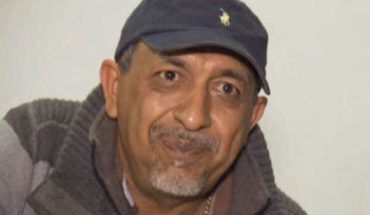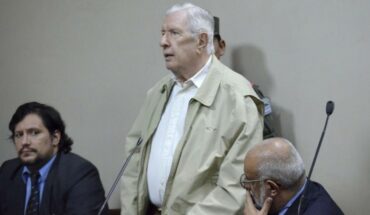Parkinson’s is the second most prevalent neurodegenerative disease in the world, after Alzheimer’s. The interesting thing is that both pathologies are related to aging. That is, as life expectancy increases, the risk increases.
In addition, Chile is one of the oldest countries in Latin America, highlighting the regions of Valparaíso, Maule, La Araucanía and Los Ríos, as the oldest in the country.
In fact, Maite Castro, with a biochemical background and PhD in Cellular and Molecular Biology, collaborator of the Interdisciplinary Center for Neuroscience (CINV), highlights that by 2050 we will be the only Latin American country with a percentage of the elderly population similar to the European continent.
She is part of an international initiative (ReBrain, from its acronym in English Rejuvenated Brain) to achieve a brain rejuvenation.
This initiative is being developed in conjunction with other researchers from the Austral University of Chile, as well as scientists from Europe and the USA. It aims at a “healthy old age”, that is, making people live better, details the specialist.
“It’s a job that no longer points to a disease, but to people aging with healthy brains,” he adds.
Dr. Castro explains that its purpose is to target preventive therapies that anticipate the appearance of the symptoms of degenerative diseases, such as cognitive impairment in Alzheimer’s or motor coordination in Parkinson’s.
“Aging with a healthy brain is undoubtedly an achievement in the quality of life of older adults, as well as the entire network of care they need,” he says.
Blood tests
The brain is not an isolated organ. Even when the entry into the brain of components and substances that travel through the bloodstream is controlled, nerve tissue maintains a relationship with blood. ReBrain focuses on studying components that the blood has, how these change during aging and how they can affect the brain.
“In a study led by Tony Wyss-Coray (Stanford University) and Saul Villeda (University of California, San Francisco), where the blood circulation of a young animal was connected to that of an old animal, clear signs of brain rejuvenation are observed in the older animal when it receives the young blood,” he explains.
Castro points out that among the effects achieved is an increase in adult neurogenesis (regeneration of new neurons).
“Adult neurogenesis or the formation of new neurons in adults exists, but with age it decreases. That’s why we talk about rejuvenation,” he says.
In addition, it indicates that there are so-called glia cells in the nervous system, which fulfill very relevant functions for the functioning of the brain and that during aging they begin to fail in these functions. These experiments could conclude in new therapies, but of course, they would not be transfusions of young blood to older people, clarifies the expert.
“Some studies have isolated components of umbilical cord blood, as well as detected receptors in glia cells that could serve as a therapeutic target,” he says.
Advances in Parkinson’s
At the same time, the national biochemist is developing a research in Parkinson’s that has been carried out for three years. “We are currently finishing preclinical analyses in animal models with quite promising results. This pathology happens specifically in the substance nigra pars compacta (area of the brain), where dopaminergic neurons die and the phenotype of the disease occurs, which is the alteration of the coordination of movement, “he says.
Sufferers have the so-called tremor, which is the tremor of one or more part of the body, muscle stiffness, alteration in posture and balance.
In these patients, as well as in other neurodegenerative pathologies, the disease progresses and is not reversible. Therefore, the scientist tries to stop the advance. “There are studies that show that during the development of Parkinson’s protein aggregates are formed in neurons of the substance nigra pars compacta, and these contain a large amount of protein of the alpha-synuclein type,” he explains.
And the problem is that these aggregates are toxic, which results in the death of neurons. It has been observed that these aggregates are also expelled from the neurons of the substance nigra pars compacta and captured by neurons from other areas, which explains the progression of the disease to other areas.brain areas.
“You could say that these aggregates ‘infect’ neighboring neurons causing their death. And the worst thing is that this spreads throughout the brain,” he says. The goal of his project is to slow the progression of the disorder, and he has achieved this, at least in his experiments with this toxic protein, in mouse models with Parkinson’s, up to six months after treatment.
“So far we have managed to prevent the spread and with it, death in other areas of the brain. Now we are corroborating whether our therapy, which decreases neuronal death, is effective in reducing symptoms,” he says.
The energy needed for the brain
The brain generates energy to do its functions and in neurodegenerative diseases and aging, it stops generating it falling into a state called “hypometabolism”. “The brain makes up 2% of the body mass in humans, but it is responsible for the use of 25% of energy, when you are at rest,” says the scientist.
And that’s where important international research comes in, led by Dr. Patricia González-Rodríguez, which revealed important data about Parkinson’s.
Castro comments that, in this article, published in the scientific journal Nature, one of the mitochondrial complexes was eliminated, with which they created animals with dopaminergic neurons whose mitochondria do not produce energy. This is because this protein complex participates in the mechanism of ATP production (the main energy source for most cellular processes).
“It happens that, by making these mitochondria defective in neurons, energy production ends. In this research they observed that neurons with defective mitochondria change their metabolism, to a shape very similar to that of cancer cells, in order to survive. However, they lose functions, such as the release of dopamine,” he says.
“This means that these diseases are closely related to energy generation. The interesting thing is that it happens in all neurodegenerative pathologies and in brain aging. One of the first milestones that happens is the problem of hypometabolism or low energy manufacturing, and any drug or treatment that corrects this problem should be useful for these diseases.”, declares the expert.
For this reason, studies by Dr. Castro herself in the context of the ReBrain initiative point to the study of hypometabolism in aging in order to determine therapeutic targets that support the idea of brain rejuvenation.





